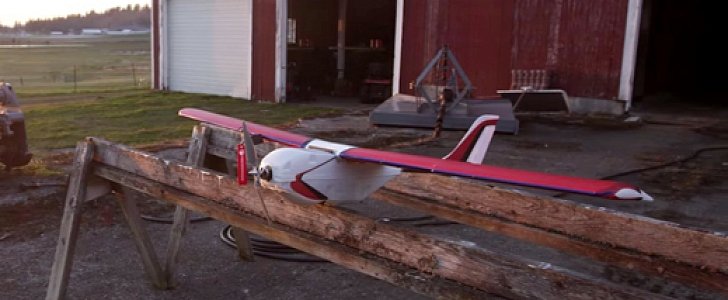Having drones deliver packages for giant companies such as eBay or Amazon seems like the natural step the electronic commerce should take. But that is not a good enough reason for the Federal Aviation Administration (FAA) to give them the green light. It’s why the governmental agency started the Pathfinder program in the first place. And the tests it’s about to run starting next Monday represent a significant step towards that decision.
At the moment, one can purchase any type of Unmanned Aerial Vehicle - whether it’s a cheap Kickstarter-born contraption or a thousand-dollar model - with one sole condition: to fly it in the owner’s line of sight. No matter how good your sight is, that remains a limited distance that stops drones from being used in economic activities such as inspecting bridges or wind turbines, and everything from agriculture to package delivering.
The FAA is not looking to become some evil enemy of the economy, but they are supposed to prevent airspace hazards from happening. In other words, aside from shooting the average aerial selfies, there’s not much you can do with a drone until the Administration legally approves them to fly freely.
For UAVs to fly like a bird, they need to prove they’re capable of avoiding any encounter with a manned aircraft, a technology currently being in its research and development phase. According to MIT Technology Review, the trials starting next week will involve flying conventional aircraft close to drones to test how they can safely respond.
In the first test, an “intruding aircraft” (a paraglider) will approach a drone flying within its pilot’s line of sight to test at what distance he or she can detect and respond to it.
Later trials will test a new safety technology for drones developed by Precision Hawk, one of the four companies the Administration is currently working with. The company’s system for low-altitude tracking and avoidance, called LATAS, can use the Verizon cellular network, satellite links, or standard aircraft location beacons to monitor and communicate with drones.
“We want to measure the ability of a person flying the drone looking for airspace hazards visually against letting the drone make some decisions,” said Tyler Collins, who leads work on LATAS at Precision Hawk. “We hope to show the FAA that as we introduce this technology it allows us to create a safer airspace.”
In theory, if drones had a similar safety system autonomous cars are currently testing, accidents could be prevented, and UAVs should get the green light in no time.
The FAA is not looking to become some evil enemy of the economy, but they are supposed to prevent airspace hazards from happening. In other words, aside from shooting the average aerial selfies, there’s not much you can do with a drone until the Administration legally approves them to fly freely.
For UAVs to fly like a bird, they need to prove they’re capable of avoiding any encounter with a manned aircraft, a technology currently being in its research and development phase. According to MIT Technology Review, the trials starting next week will involve flying conventional aircraft close to drones to test how they can safely respond.
In the first test, an “intruding aircraft” (a paraglider) will approach a drone flying within its pilot’s line of sight to test at what distance he or she can detect and respond to it.
Later trials will test a new safety technology for drones developed by Precision Hawk, one of the four companies the Administration is currently working with. The company’s system for low-altitude tracking and avoidance, called LATAS, can use the Verizon cellular network, satellite links, or standard aircraft location beacons to monitor and communicate with drones.
“We want to measure the ability of a person flying the drone looking for airspace hazards visually against letting the drone make some decisions,” said Tyler Collins, who leads work on LATAS at Precision Hawk. “We hope to show the FAA that as we introduce this technology it allows us to create a safer airspace.”
In theory, if drones had a similar safety system autonomous cars are currently testing, accidents could be prevented, and UAVs should get the green light in no time.
